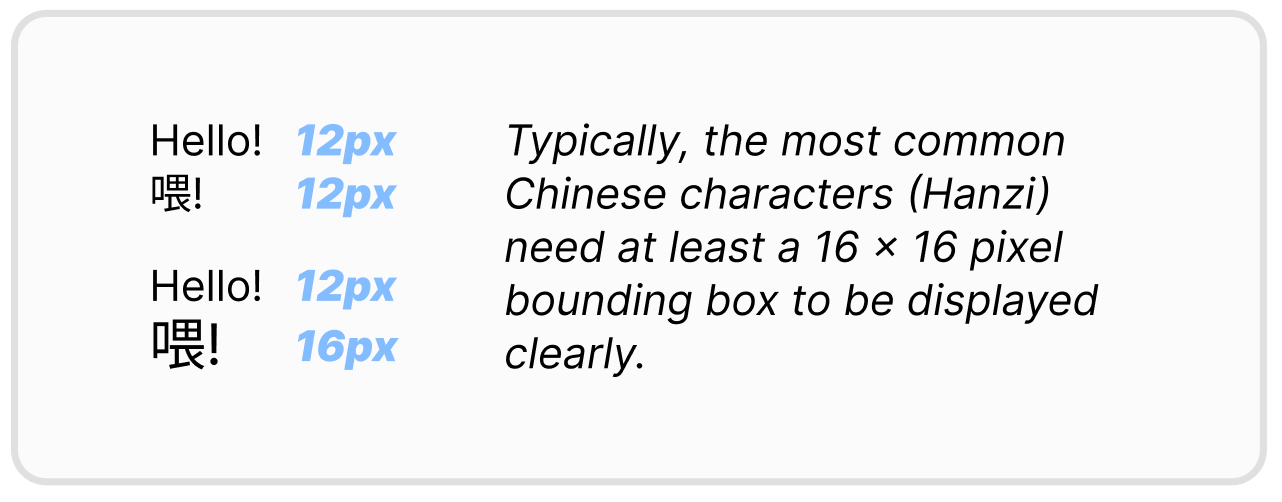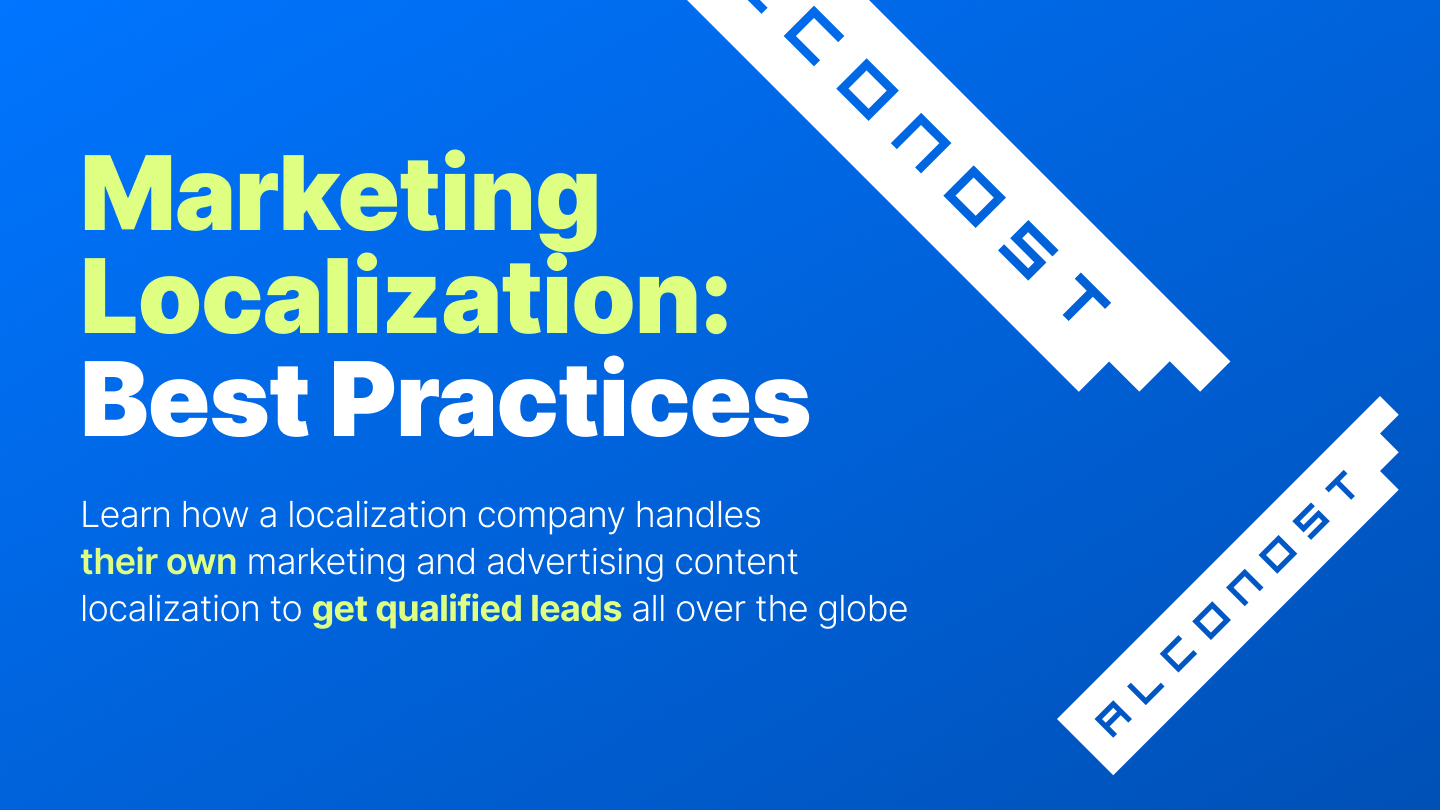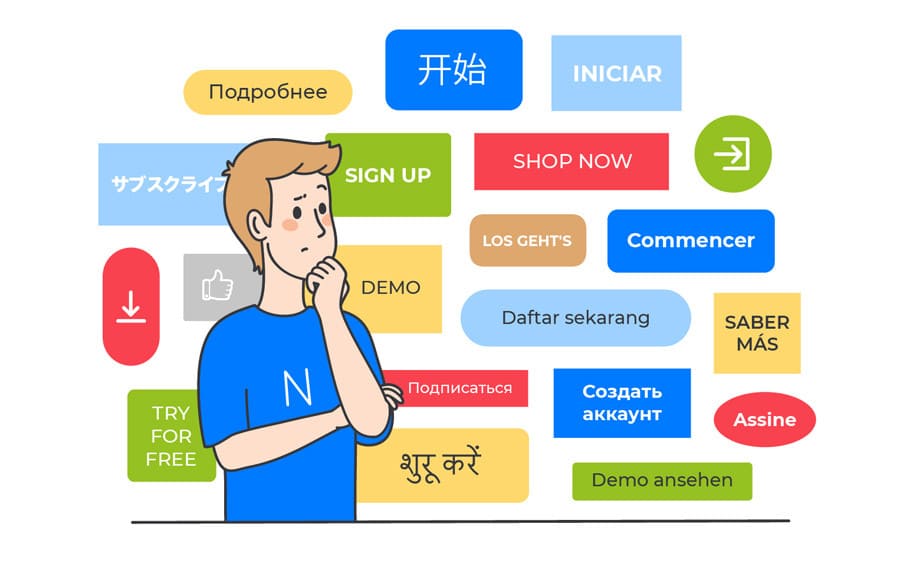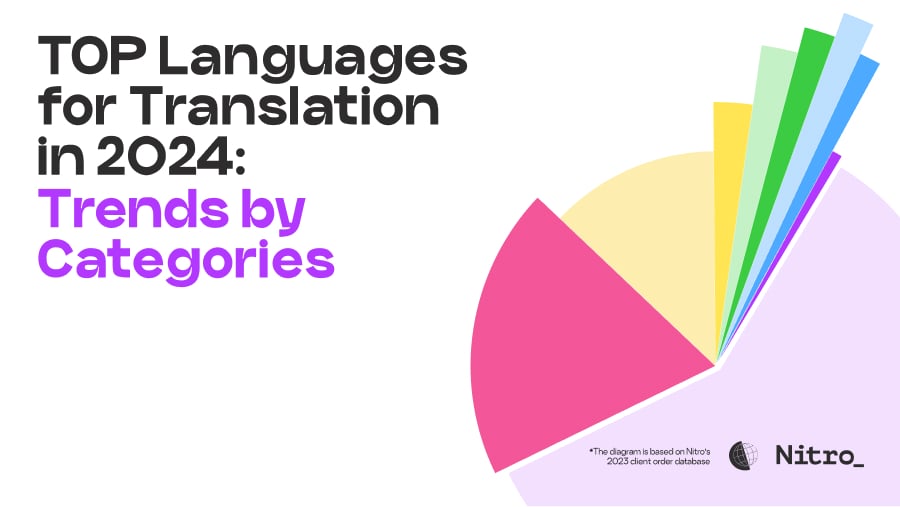Our blog is for executive teams, marketing, product, localization, and localization teams that actively support international business expansion. We share knowledge gained about localization, globalization, and culturalization to assist you in creating informed global growth strategies. Likewise, we do this by drawing on our two decades of experience running a worldwide localization company. 🌎
Companies looking to expand internationally recognize a tremendous opportunity for corporate growth, but you can't just throw your English product to a localization team and hope for the best. One of the most significant barriers to success is a product that has not been designed to be cost-effectively and efficiently localized.
Enter internationalization or I18n.
Internationalization is the process of creating a product that is easily adaptable to several languages and geographical areas. Character encoding, typefaces, colors, local calendars, dates, numbers, time formats, and other elements are all considered during the process. Important source code components become extractable and adaptable with internationalization, making it simple to modify for every target market.
If you choose not to internationalize, you may encounter the following technical difficulties:
❌ Every typeface does not support the characters required for each language. Instead of the desired text, you can get blank boxes or placeholder symbols if you choose a font that doesn't have the right character set. For example, Japanese text may appear as squares rather than the appropriate characters.
❌ Layout problems can arise with certain languages. German writing, for instance, tends to enlarge, while other languages, such as Chinese, tend to shorten, which may affect your design. Design modifications are also necessary for languages like Arabic and Hebrew, which have various text directions.
❌ Additionally, your app may handle currency and number formatting incorrectly, which could lead to financial problems.
❌ Another difficulty is that different languages have different needs for letter complexity, size, and spacing. For logographic writing systems like Chinese characters, a text size that is perfectly readable in one language—such as a 12-point font for Latin or Cyrillic scripts—may be unreadable in another.

If you don't fix these problems, some of your overseas users may have a bad user experience or not be able to use your product at all. Customer support calls may spike, and you might see bad reviews online.
You can avoid all these problems by conducting internationalization before you localize one word.
How to get internationalization done
Choose the right team
Several positions may be in charge of internationalizing your product, depending on the size and structure of your company:
- Engineers and developers of software serve an essential function by organizing code for simple adaptability—for example, by isolating strings and controlling layouts to accommodate various languages and writing systems.
- Quality Assurance (QA) teams—By checking for problems like text truncation, font support, and style consistency, QA teams ensure that every component works as intended. Their input is crucial for detecting issues that can compromise the user experience early.
- Product managers—Product managers ensure that teams have the tools, priorities, and schedules necessary for successful foreign expansion by coordinating internationalization initiatives with business objectives.
- Localization engineers—Localization engineers specialize in preparing items for linguistic and geographical modifications. To meet internationalization requirements, they collaborate with developers to integrate support for right-to-left (RTL) languages and set up workflows for effective localization.
Dealing with a Vendor: The Easy Way Out
Working with a vendor like Alconost can simplify the process if handling several jobs internally is too difficult or time-consuming. Vendors frequently possess the knowledge and resources to manage localization and internationalization effectively. With this strategy, your team can concentrate on developing your core product while the vendor handles the language and technical facets of preparing your product for international markets.
Establish workflows
By developing workflows and ensuring that the product's technological infrastructure supports many languages and geographical areas, localization engineers concentrate on preparing the product for localization. They identify and work through internationalization requirements in close collaboration with developers. For instance:
- The code and string resources must be kept apart, and the graphics must be regionally appropriate.
- Fonts ought to be kept in distinct resource files.
- Implementing a language-switching mechanism is necessary.
- There must be support for right-to-left (RTL) languages.
Choose tools to support your efforts
The majority of platforms include useful tools to help you create a product that is both scalable and localizable. Alconost, for example, has the necessary resources to guarantee that your product is localized perfectly. They assist you in reaching larger markets while maintaining effectiveness and quality, thanks to their proficiency in translating information for different languages and cultures. The following materials are available to you:
The final step: Language Quality Assurance (LQA)
Once localization is finished, how can you ensure the text appears accurately in the app's localized version?
LQA (Localization Quality Assurance) is the way to go.
Following localization and internationalization, you should launch a test version of the application to verify the text within the operating program. This is where Localization Quality Assurance (LQA) is useful. As the testers work through the product, they record every defect in a tracker, pinpoint the problematic string, explain the problem, and recommend a fix. Before launch, LQA assists in identifying issues such as broken links, text that overlaps UI elements, and other display issues.
Why is Internationalization Essential?
Internationalization (I18n) is the basis for developing goods easily adaptable to many languages and geographical areas, guaranteeing seamless, economical localization. Satisfying the demands of various audiences entails modifying components such as character encoding, layouts, dates, and formats without completely redoing your product's main body. Ignoring this step frequently results in technical issues, including unreadable typefaces, wrong currency formats, and text truncation, which can harm user experience and brand reputation in international markets.
By internationalizing, businesses create the foundation for smooth localization and the best possible user experience across cultural boundaries. With the correct translation partner, like Alconost, you can ensure that your product is made with scalability and adaptability in mind and is localized to reach a larger audience. With various services ranging from internationalization assistance to Localization Quality Assurance (LQA), Alconost's tools and experience facilitate the localization process. This guarantees the worldwide compatibility of your product, positioning you for prosperous global growth.
From designing integrated localization procedures to conducting linguistic testing on your localized product, we develop comprehensive linguistic solutions for multinational brands. To find out how we can help your international expansion, get in touch.







